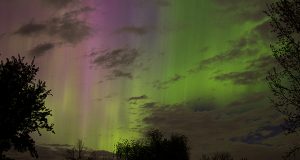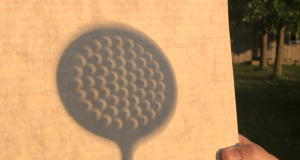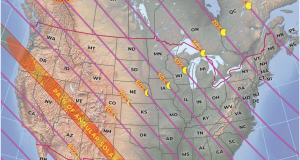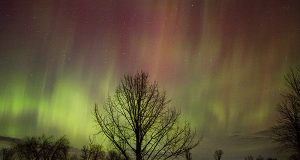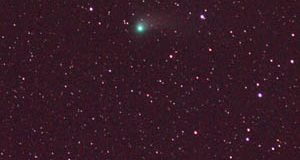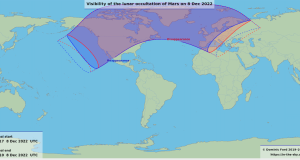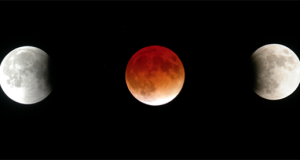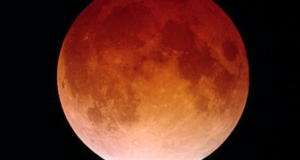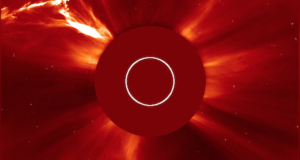For most of Canada and the USA, the April 8 total solar eclipse was a partial event with most of the sun being covered by the moon. However, for those who drove to the specific 200-kilometre-wide path of totality stretching from Texas to Newfoundland, the show was spectacular. I have seen partial solar eclipses including an annular in the ...
Read More »Author Archives: Gary Boyle
The Total Solar Eclipse
In a few short weeks on April 8th, the long-anticipated total solar eclipse will be upon us. Standing on a specific 185-kilometre-wide path will result in witnessing the moon completely cover the sun. Along the center of this path will result in a maximum of three to four minutes of totality. This path starts in Mexico and then continues over ...
Read More »The Geminid Meteor Shower
The annual Geminid meteor shower will peak on the night of Dec 13 into the morning of the 14th. This shower will produce up to 120 meteors per hour with some bright fireballs. Annual meteor showers are produced when Earth crosses debris fields from comets as we orbit the sun, this is why various showers occur at the same time ...
Read More »The Next 100 Years
The night of October 5-6, 1923, forever changed the way astronomers saw and studied the cosmos. It was believed the Milky Way we see on clear moonless nights was the ‘universe’. Little did they know a simple 45-minute photograph would throw them a curve. It was long suspected a small patch of light located in the constellation of Andromeda was ...
Read More »A Partial Solar Eclipse
A few times each year the sun, moon and Earth perform a cosmic lineup in space producing an eclipse. This year our planet will witness two solar and two lunar events. On Saturday, October 14, 2023, skywatchers along a path starting in Oregon through Nevada, Utah, New Mexico and ending in Texas will see an annular eclipse of the sun. ...
Read More »Annual Perseid Meteor Shower – Peak is August 12th
The highlight of any summer other than camping and going to the cottage is viewing the annual Perseid Meteor Shower. This year the peak night occurs on the night of August 12 into the morning of the 13th. We should see 60 to 80 meteors (commonly called shooting stars) dashing through the sky at 59 km/second, lighting up the night. ...
Read More »Bring on the Sun
Our daytime star is an enormous ball of hot plasma. Like a string of pearls, 109 earths line up side by side across its equator and 1.3 million of our worlds would fit inside. Ever since its birth some five billion years ago, the sun has been producing light we see and enjoy, via nuclear reactions deep in its ...
Read More »Spooky Eyes – Venus & Jupiter Conjunction on March 1
The night sky is a fantastic collection of tiny dots. Most of these light sources are faint while a few are noticeably brighter. In addition to seeing hundreds or even thousands of distant suns residing at extreme distances, we can see the planets of our solar system. Referred by the Greeks as the “wanderers”, five planets can be seen ...
Read More »Spotting A Comet
What better way to open the new year than by spotting a hopefully bright comet? It is referred to as comet C/2022 E3 (ZTF) and it could be putting on a decent show in northern skies throughout January. This will be a great chance to test that new set of binoculars or telescope you may have received for Christmas. ...
Read More »The Mars Show
Some three billion years ago, Mars was believed to have been a water world just like earth. It possessed great oceans and was most likely on its way to forming life in one form or another. Water is made up of hydrogen, the most common element in the universe and oxygen, the third most common element. Water is extremely ...
Read More »Last Total Lunar Eclipse for North America – early hours November 8
In the early morning hours of November 8, 2022, North America will witness the last total lunar eclipse of the year. This amazing sky show will play out with Eastern, Atlantic and Newfoundland time zones seeing most of the event until moonset. The rest of North America will enjoy the late but spectacular show. This is a very safe event ...
Read More »Last Total Lunar Eclipse for North America – November 8
In the early morning hours of November 8, 2022, North America will witness the last total lunar eclipse of the year. This amazing sky show will play out with Eastern, Atlantic and Newfoundland time zones seeing most of the event until moonset. The rest of North America will enjoy the late but spectacular show. This is a very safe event ...
Read More »A Total Lunar Eclipse
One of the best spectacles in the night sky is a total lunar eclipse. No special equipment is required to watch this cosmic lineup. In contrast to a solar eclipse, the lunar variety is very safe to witness and enjoy. On the night of May 15, the full Flower Moon with creep into the much larger earth’s shadow with the ...
Read More »Dodging a Solar Bullet
For the most part, this past February 15 seemed like any ordinary day. We recognized Flag Day as the Canadian maple leaf that was first raised in Ottawa in 1965. But things played out differently on the surface of the sun with a huge explosion known as a Coronal Mass Ejection (CME) into space. The good news for us, this ...
Read More »2021 Astronomy Year In Review
Looking back to 2021, there were many great space stories in the news including two lunar eclipses back in May and November. By coincidence, two more total lunar eclipses will occur in May and November 2022. We were also entertained by three great meteor showers in January, August and December but the moon ran major interference. The Northern Lights were ...
Read More » Wawa-news.com You can't hear the 'big picture'!
Wawa-news.com You can't hear the 'big picture'!
